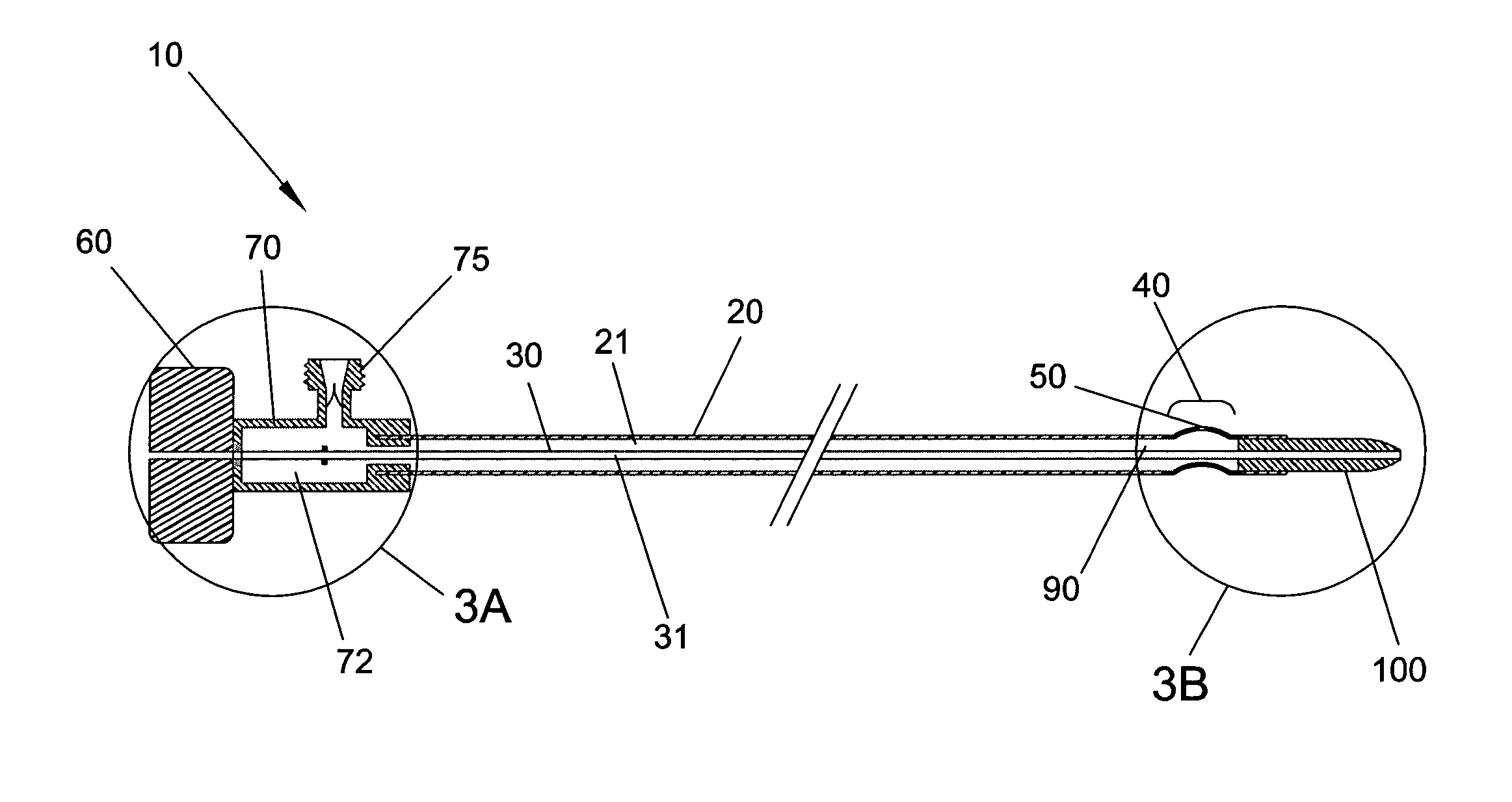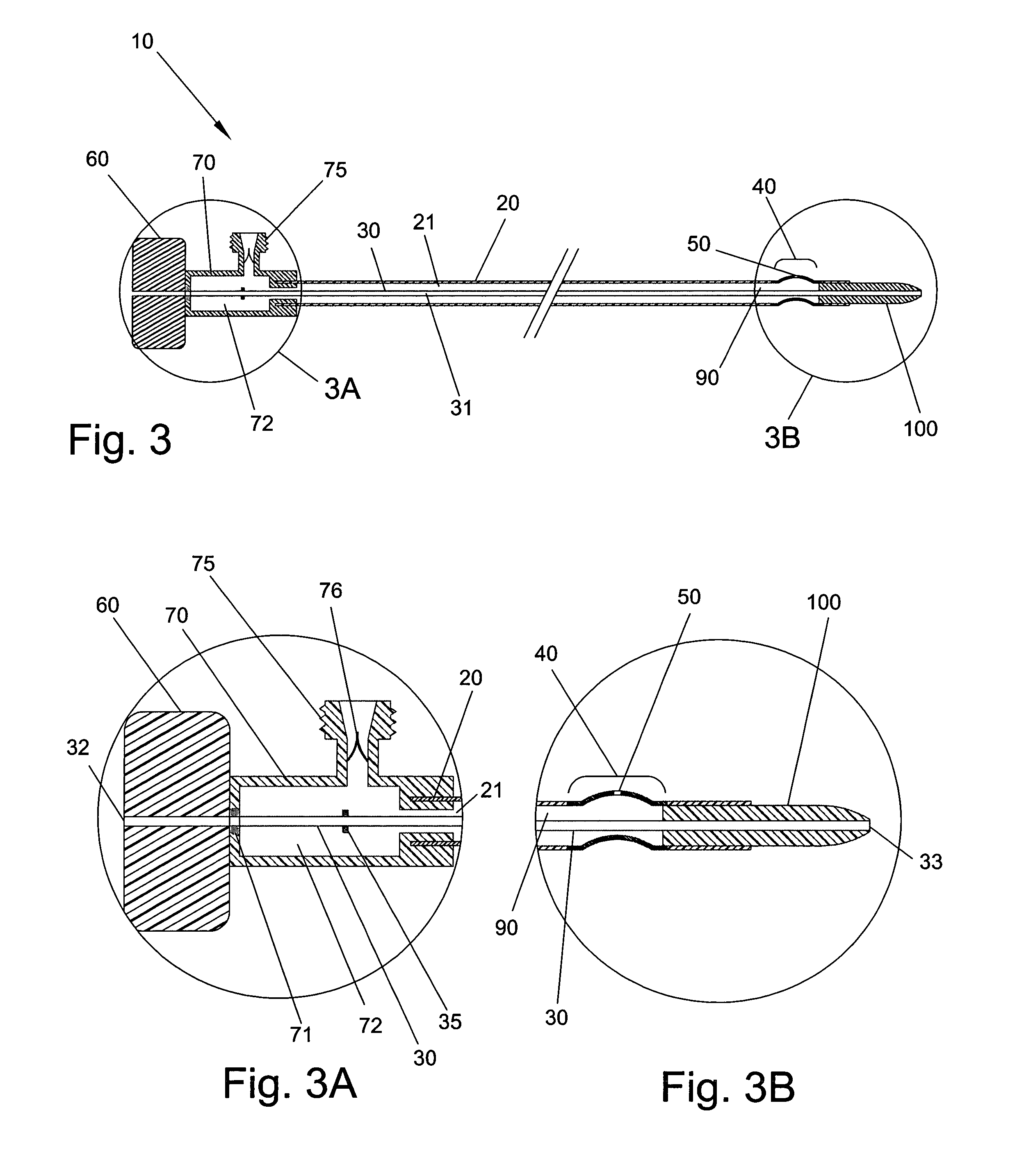Material removal catheter and method
a technology of material removal and catheter, which is applied in the field of medical devices, systems and methods, can solve the problems of human blood vessels often becoming partly or fully occluded, serious injury or even death, and further complications
- Summary
- Abstract
- Description
- Claims
- Application Information
AI Technical Summary
Benefits of technology
Problems solved by technology
Method used
Image
Examples
Embodiment Construction
[0046]Referring first to FIGS. 1A and 1B, there is illustrated an exemplary embodiment of a catheter device 10 constructed in accordance with the present invention. The catheter device 10 includes a catheter shaft 20 constructed of materials that are biocompatible and also permit flexibility of the device required to allow insertion into and advancement through the vasculature of a patient. Catheter shaft 20 contains one or more hollow lumens within its structure that allow flow of material such as blood or thrombus, as well as permit controlling shafts, mechanical linkages or flexible tubes or wires to slide back and forth. Fixedly attached to the proximal end of catheter shaft 20 is a handle, handle 70, which allows the user to advance and maintain the position of the distal end of catheter device 10, as well as rotate the catheter shaft 20.
[0047]Handle 20 includes aspiration port 75 that is in fluid communication with an internal lumen of catheter shaft 20. Aspiration port 75 can...
PUM
 Login to View More
Login to View More Abstract
Description
Claims
Application Information
 Login to View More
Login to View More - R&D
- Intellectual Property
- Life Sciences
- Materials
- Tech Scout
- Unparalleled Data Quality
- Higher Quality Content
- 60% Fewer Hallucinations
Browse by: Latest US Patents, China's latest patents, Technical Efficacy Thesaurus, Application Domain, Technology Topic, Popular Technical Reports.
© 2025 PatSnap. All rights reserved.Legal|Privacy policy|Modern Slavery Act Transparency Statement|Sitemap|About US| Contact US: help@patsnap.com



